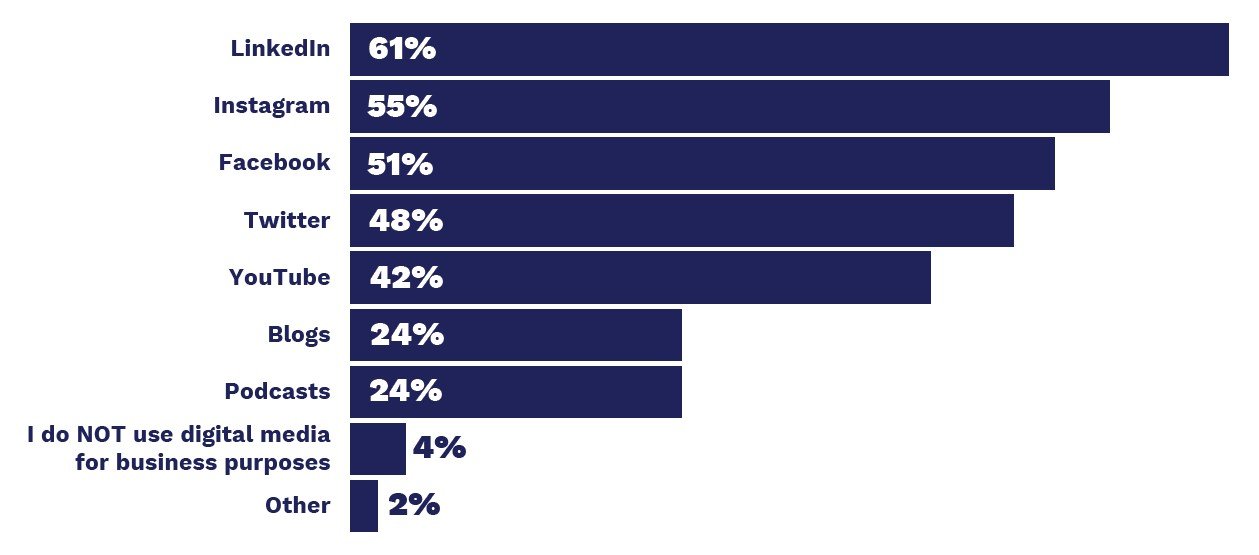How Does Meta's Ad-Free Subscription in Europe Impact Place Marketing?
Meta's latest reveal—an ad-free subscription model in Europe—echoes far beyond their own platform. As stringent data privacy laws like GDPR recalibrate the digital playing field, this strategic shift not only aligns with regulatory demands, but also reshapes the essence of consumer engagement (not to mention the increasing B2B use-cases).
In the place marketing realm, this update is worth a closer look. Both Facebook and Instagram rank highly in our Winning Strategies in Investment Promotion Marketing and What Talent Wants surveys as top platforms where executives and talent are spending time. Will this have an impact?
Source: Winning Strategies, 2023, C Studios
What exactly did Meta announce?
Meta announced the introduction of a subscription service across Europe, granting users an ad-free experience on their platforms. This new service is a direct response to Europe's stringent data protection regulations, allowing users to bypass the traditional ad-supported model.
In essence, users can now opt for a more private browsing experience, reducing their digital footprint by limiting how their personal data is harvested for targeted advertising. This shift marks a significant departure from Meta’s long-standing revenue strategy and sets a precedent for how tech giants may adapt to the global demand for greater data privacy.
What are people saying about how this will impact users?
Industry experts and consumer advocates are voicing mixed predictions on how Meta's subscription model will impact users. Some herald it as a win for privacy, empowering users with more control over their data. Others caution that a tiered access system could widen the digital divide, with ad-free experiences becoming a premium.
Meanwhile, social media users are expressing concerns about potential content gating and the quality of their experience. The consensus is clear: the move will fundamentally alter the user landscape, prompting a critical examination of the value exchange between personal data and digital content.
Why this matters?
Generally speaking, this shift by Meta has profound implications for both B2B and B2C brands at large that have long relied on the granular targeting afforded by Meta's platforms.
The introduction of an ad-free tier in Europe could reduce the overall volume of ad impressions, potentially increasing costs and competition for the remaining ad-supported space. As things stand, GDPR is already creating volume, tracking and attribution complications for brands targeting Europe.
For content marketers of many industries, the change necessitates a more nuanced approach, prioritizing quality and user engagement over sheer reach. Brands will need to innovate, finding new ways to harness the power of Facebook and Instagram through organic content and alternative marketing strategies that resonate with a privacy-conscious audience.
Source: What Talent Wants, 2023, C Studios
Will this roll out in other geographies?
Meta has not publicly outlined a definitive plan to expand the ad-free subscription service beyond European borders. The decision to test the waters in Europe likely stems from its stringent data privacy environment, setting a rigorous standard for user protection.
However, given the global nature of digital platforms and the increasing scrutiny on data privacy worldwide, it is reasonable to speculate that should the European model prove successful, similar subscription services could be considered in other regions.
Such expansion would depend on a multitude of factors including regional privacy laws, market demands, and the outcomes of the European implementation.
What’s our view on the impact to place marketing?
There are a few considerations to keep in mind for place marketing organisations and they mostly come down to audiences. As noted above, concerns over creating a tiered system are worth watching.
While LinkedIn is the preferred channel for B2B business attraction, the above data sets suggest that Meta holds some value here, especially with expanded options for B2B in recent years. Do senior executives go for the subscription option because they can afford it, and thus make Meta unusable for B2B advertising?
This grows as a concern for marketers targeting Japan and South Korea if the Europe strategy expands eastward, where Facebook is used for business and LinkedIn has struggled to gain traction.
From a talent recruitment perspective, a similar thought emerges. The impact on workers early in their careers may be negligible, but does the subscription model gain favour among those in higher-paying industries, with more years of experience and higher educational attainment?
If so, it reduces the appeal of using Meta ads for talent recruitment campaigns. Of course, in all cases, working toward more effective organic content marketing approaches is never a bad direction and may be where we’re all headed down the road anyway.
In our view, we don’t imagine it will change much for at least a few years. Why? People are already prioritizing Netflix, Spotify and other subscription services that offer much less for free than Meta (where it’s business as usual without a subscription).
During these economically uncertain times, that’s probably enough to prevent massive demand from users in the near and mid-term. We’ll keep this article updated as news on adoption trickles in.
For more information on place marketing, sign up for our newsletter and follow us on LinkedIn.



